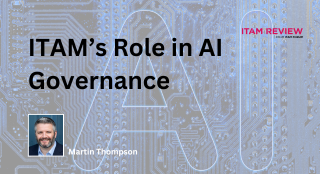ARTICLE: Ten Leaks In Your Software Management Process
 There is only one thing worse than being audited by a software vendor and finding yourself out of compliance – and that’s allowing it to happen again a few years down the line.
There is only one thing worse than being audited by a software vendor and finding yourself out of compliance – and that’s allowing it to happen again a few years down the line.
From a known compliant state, fully licensed and up to date – how does an organisation slowly fall out of compliance?
Where are the leaks?
End User Leaks
1. End users on the network install software themselves without an appropriate license. This can be through;
- Deliberate abuse
- Ignorance of terms and conditions or
- Not checking that the business is covered.
2. End users buy legitimate software themselves but don’t pass on purchase and license information to the purchasing department or breach the terms and conditions.
3. End users buy legitimate software but via the wrong channels e.g. not via the recognised volume agreement.
IT Department Leaks
4. IT Department install software or redeploy existing software without checking license entitlement.
5. IT Department install software, check license entitlement but then licence it incorrectly. This can be through;
- Using licenses outside their original terms and conditions e.g. OEM Confusion, using academic licenses in a commercial environment
- Using the wrong version or edition e.g. Professional rather than Standard
- Failing to inform end users of the terms and conditions once it’s installed.
6. IT Department install software in Virtual Environments incorrectly;
- Software is installed on a server which many people can access – exceeding the total number allowed to access that application.
- Software in installed which is based on the hardware profile of the machine it is installed on or number of connections without understanding the consequences.
7. Losing track of physical copies of license agreements.
Supplier Leaks
8. Your hardware supplier ships hardware with inappropriate OEM software.
9. Your software supplier sells you fake software.
10. You are misold software from the vendor or reseller or they lose track of your purchase history.
Have I missed anything? How else do companies fall out of compliance?
Can’t find what you’re looking for?
More from ITAM News & Analysis
-
Broadcom vs Siemens AG - A Brewing Storm
The ongoing legal battle between VMware (under Broadcom ownership) and Siemens is yet another example of why ITAM goes far beyond license compliance and SAM. What might, at first glance, appear to be a licensing dispute, ... -
Shifting Left Together: Embedding ITAM into FinOps Culture
During one of the keynotes at the FinOps X conference in San Diego, JR Storment, Executive Director of the FinOps Foundation, interviewed a senior executive from Salesforce. They discussed the idea of combining the roles of ... -
Addressing the SaaS Data Gap in FinOps FOCUS 2.1
I recently reported on the FinOps Foundation’s inclusion of SaaS and Datacenter in its expanded Cloud+ scope. At that time, I highlighted concerns about getting the myriad SaaS companies to supply FOCUS-compliant billing data. A couple ...
Podcast
ITAM training
Similar Posts
-
The M&S Cyberattack: How IT Asset Management Can Make or Break Your Recovery
Marks & Spencer (M&S), the iconic UK retailer, recently became the latest high-profile victim of a devastating cyberattack. Fellow retailers The Co-Op and Harrods were also attacked. Recent reports suggest the rapid action at the Co-Op ... -
AI in ITAM: Insightful Signals from the Front Line
During our Wisdom Unplugged USA event in New York in March 2025, we engaged ITAM professionals with three targeted polling questions to uncover their current thinking on Artificial Intelligence—what concerns them, where they see opportunity, and ... -
How ISO/IEC 19770-1 Can Help Meet FFIEC Requirements
In the world of ITAM, the regulatory spotlight continues to intensify, especially for financial institutions facing increasing scrutiny from regulatory bodies due to the growing importance of IT in operational resilience, service delivery, and risk management. ... -
An Introduction to Scope 4 Emissions
Executive Summary For ITAM teams, sustainability is a core responsibility and opportunity. Managing hardware, software, and cloud resources now comes with the ability to track, reduce, and report carbon emissions. Understanding emission scopes—from direct operational emissions ...




